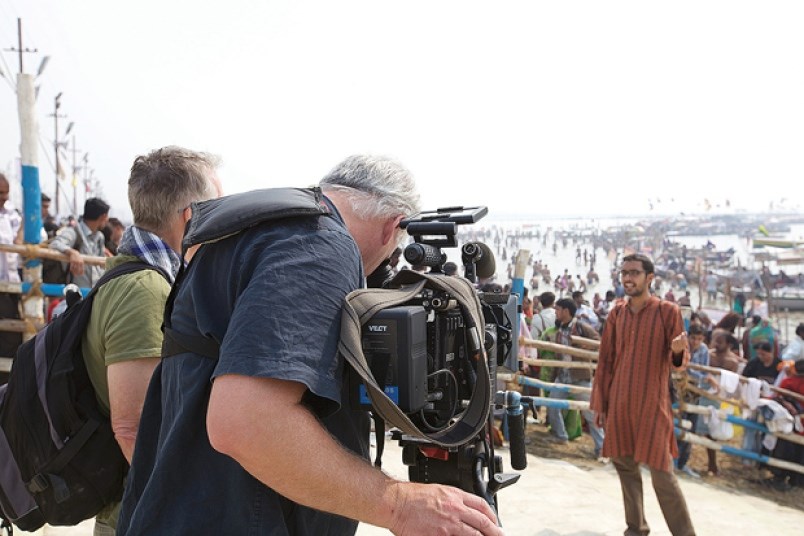Near the end of the 19th century, Levi Strauss ran an advertisement of a mustachioed, cigar smoking man wearing jeans that could be had in either grey or in blue.
More than 125 years later, the fashion predilection of punks, hippies, cowboys and Neil Diamond is one of the most popular, mass-produced pieces of clothing on the planet.
But it’s come with a cost.
The new documentary RiverBlue shows us the tailings of the fashion industry, and in particular, blue jeans.
We see a river topped with a black viscous skin that looks like Saran Wrap made of bitumen. We see a body of water that changes colour according to what colour dye is being used upstream. And we hear an environmental scientist accuse clothing companies of committing “hydro-cide.”
“I really wanted to do a documentary where we could show problems and solutions, and… show there is a way to change, if we want to change,” explains North Vancouver’s Roger Williams, the movie’s producer and co/director.
Despite not having the notoriety of the mining or oil industries, fashion — taken as a whole — is a tremendous polluter. In their 2012 list of the world’s most toxic industries, both tanneries and the dye industry cracked the top 10, according to international not-for-profit environmental watchdog the Blacksmith Institute.
By focusing on India, China and Bangladesh, RiverBlue runs the risk of being one of those documentaries that only makes a North American audience feel bad for people “over there.” However, the film largely sidesteps that pitfall by underlining pollution as a global issue.
The movie opens with an image of the Earth and a reminder of the relative scarcity of freshwater. Due to that scarcity, we’re told, the wars of the future will be waged over water.
It’s a timely message as scientists have used NASA’s satellites in recent years to detect the loss of enormous stores of freshwater along the Tigris and Euphrates River as well as in Colorado.
RiverBlue also benefits from having the courage to address not only the fashion industry’s suppliers, but also its demanders.
In general, the fashion industry doesn’t want its consumers to know anything that’s really going on. “Because they don’t want to stop the money,” explains Williams, adding that part of the movie’s aim is to give the consumer the information to make up their own mind.
Not wanting to make what he considered a “doom and gloom” documentary, Williams spends the last portion of the movie focusing on environmentally-sound alternatives, which are more affordable than you might expect.
In Milan, Italy, president and CEO of Italdenim, Luigi Caccia, takes the filmmakers inside his factory to demonstrate how he dyes jeans using a compound derived from leftover shellfish. The drop in carbon dioxide emissions from his factory is staggering. Caccia’s candour about his own motivation is also quite refreshing.
“You save nature,” he says, before quickly adding, “but first you save money.”
With the cash he’s saved, Caccia can sell Italdenim jeans for roughly the same price as the pants coming out of environmentally dubious factories elsewhere, according to Williams.
The film took three years to make, which was time they could spare given the reluctance of the textile industry to make wholesale changes.
“[We had] time on our side,” Williams acknowledges.
The shoot was frequently held up by protracted negotiations to get into factories and sometimes to get into countries, according to Williams, who says he made 18 trips to the Indian consulate.
“It was not an easy project to put together,” he says. “Nobody wants to see their country shown in a bad light.”
But Williams is confident the movie will help change the industry. Levi’s has committed to making 80 per cent of its clothes using water-saving technology in the coming years. Brands like Patagonia and Tortoise Jeans also offer alternatives for environmentally-conscious consumers.
“The consumer really has a lot of power,” he says. “The dial’s already changing.”
If the movie’s successful, the dial will start changing at the speed of fashion.
RiverBlue premieres at the Â鶹´«Ă˝Ół»International Film Festival, Oct. 1, 6:30 p.m. at SFU Woodwards, Goldcorp Centre for the Arts, Saturday. For more information, visit .



